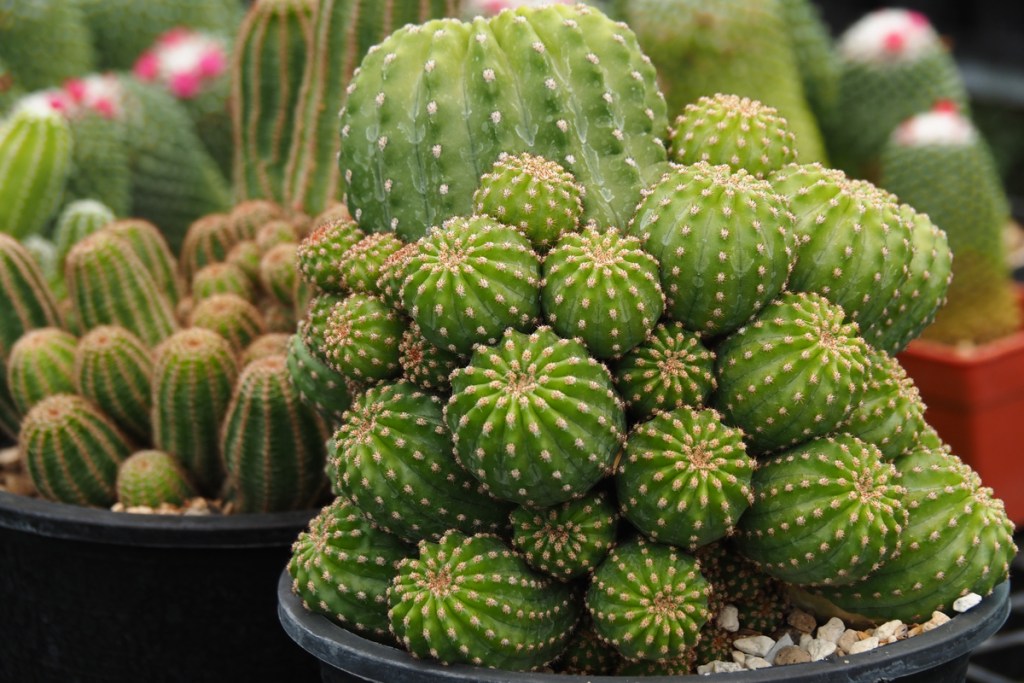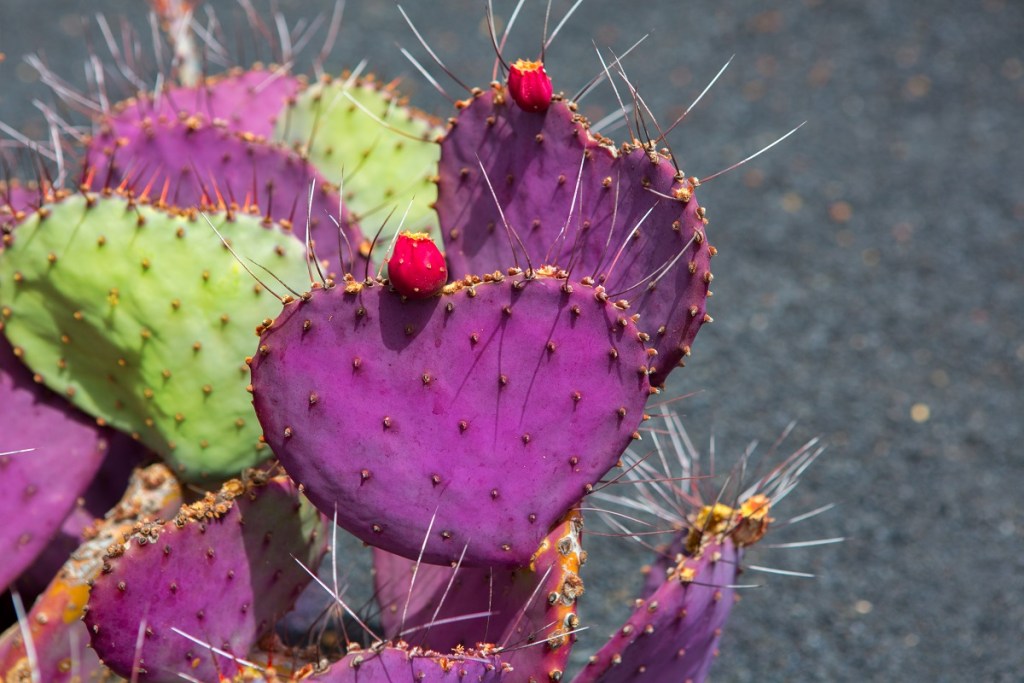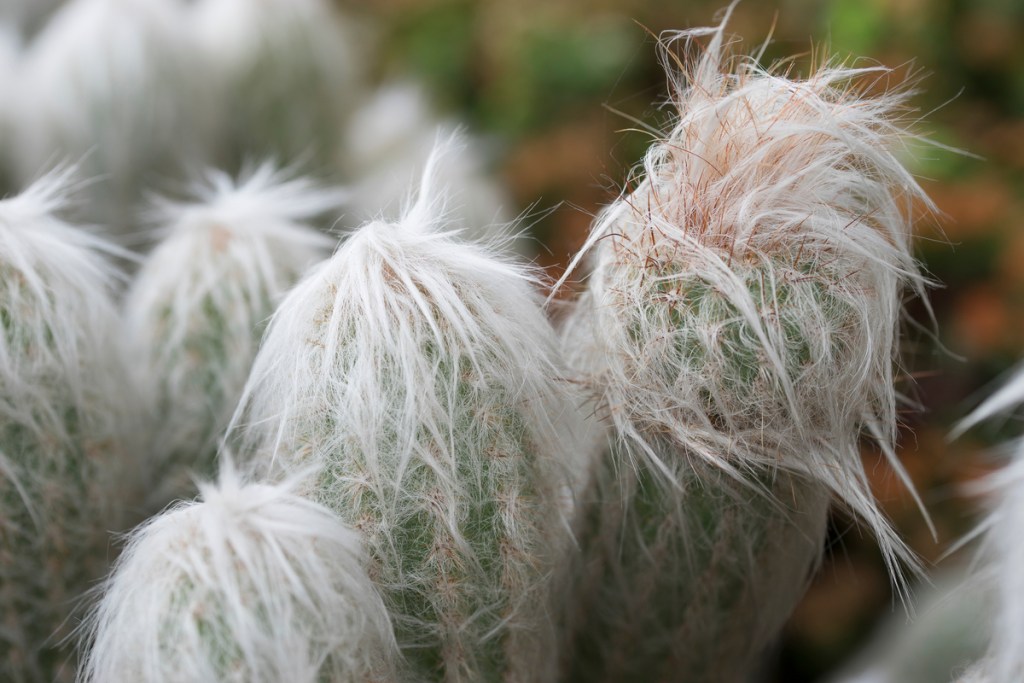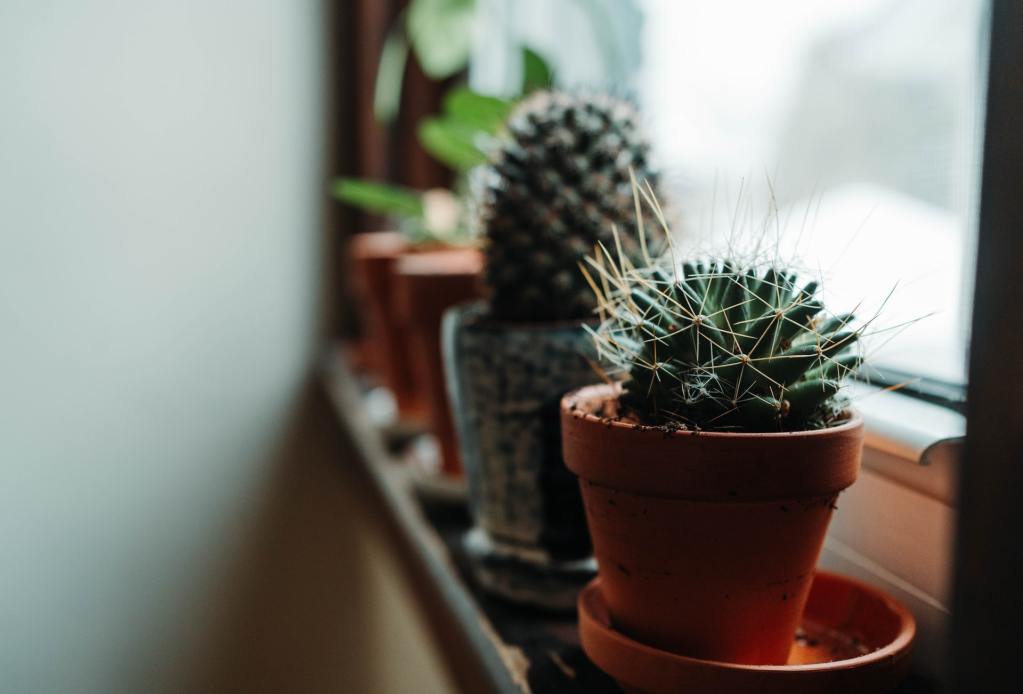Cacti are some of the most popular plants for beginner gardeners and houseplant enthusiasts who might need plants more tolerant of neglect. These prickly plants are hardy — they can get by naturally without much water, so they can withstand periods of drought.
These plants are also stunningly diverse. There are over 2,000 species of cacti split up among 87 genera. Some larger species, such as the saguaro cactus, primarily grow outdoors because of their large mature size; however, that doesn’t mean it’s impossible to grow them inside.
At this point, you’re probably wondering, “What kind of cactus do I have? Is it even important to know, or do they all need the same care?” Knowing what kind of cacti you have in your plant family is essential for proper care, and the identification process comes down to physical characteristics.

Why it’s important to know what kind of cactus you’re growing
Knowing the kind of cactus you’re growing is just as important as knowing the different names of all your leafy, water-loving plants. Without that knowledge, you won’t know the best way to ensure happy, healthy growth. Every cactus species is different, and although there are some general guidelines you can follow, the nuanced aspects of their care can vary.
Cacti can have different flowering times, different pest problems, different solutions for spine loss, and more. While knowing how much light and water a cactus needs is essential to keeping it alive, you won’t know exactly what you’re dealing with without identifying your cactus.

Ways to identify your cacti
There are multiple ways you can identify your cacti! Even from just having them in your home, it’s easy to see that they can have different lengths, widths, and overall sizes of spines, and they can also vary in shape and size at maturity. The first step is to make sure what you’re dealing with is a cactus and not a succulent; although cacti fall under the umbrella of succulents, not all succulents are cacti.
Cacti — even spineless ones, which do exist! — have areoles. The areoles are soft, cushion-like areas that the flowers, fruits, hairs, and spines on a cactus grow from. Although some succulents have spines, they don’t have areoles. So looking for this distinct organ, which is present in cacti after two to three weeks of life, is important.
Size and shape
Looking at the size and shape of your cacti is a good place to start. Some cacti varieties will stay small even at maturity while others, like the saguaro cactus, will be enormous when fully grown. Larger cacti still can be managed as indoor plants, though; usually, you’ll be able to tell whether they’ll be big or not based on their growth patterns.
The shape is another important factor. Although many cacti are globular and cylindrical, some have winding growth, and others grow in sections called pads. Is your cactus stubby and growing outward, or is it thinner and growing tall? With over 2,000 species of cacti, studying the shape and the size of your cacti can do a lot for whittling down your list of contenders.

Stems and spines
The stems and spines are good indicators of what cactus you’re dealing with, especially when paired with a cactus’s size and shape. Cacti stems can be smooth or ribbed, covered in spines, or just sporting areoles. A stubby, ribbed cactus may be a different variety than a ribbed cactus with column-like growth, so looking up identifiers in groups will get you closer to figuring out what kind of cactus you’re dealing with. Some cacti even have tubercles (growths that sprout from the outer parts of the plant) that can be round or triangular, which are especially helpful for figuring out species.
Because spines can look so different from species to species, they shouldn’t be overlooked. Some spines are small and hair-like, often appearing soft on the surface of the cactus. Others are thick and long, usually giving off more of an “if I touch this, I might die” vibe.
Some varieties are even more unique, like the old man cactus (or Cephalocereus senilis). The old man cactus has what seems to be unkempt white hair growing all around it, and the hair actually covers up sharp yellow spines. Cacti with more unique spines will be easier to identify, but for others, you’ll want to research multiple characteristics.
What are the flowers like?
A flowering cactus is rather peculiar, and if you’re lucky enough to have a bloom on yours, it’s a great way to identify what cactus you’re dealing with. Cacti can have bright or pale blooms, and some even have two-toned blooms with one color at the outer part of the flower and another at the inner part.
When the blooms grow can give a good hint at the species too. For example, the beloved Christmas cactus blooms from early to mid-winter; however, the similar-looking Thanksgiving cactus starts growing its blooms in late fall and continues through the middle of winter. For these holiday cacti, the best way to identify them is to pay attention to what time of year they bloom.
Something to keep in mind, though, is that some cacti may need specific conditions to flower. If your cactus isn’t flowering, that doesn’t necessarily mean it will never flower, especially if you don’t know what variety or species it is. If it doesn’t have flowers, you’ll want to leave out flowering habits altogether when identifying the cactus; otherwise, you could go down the wrong path.
Here’s a list of some (though not all!) flowering cacti:
- Easter cactus
- Christmas cactus
- Garnet or dwarf cactus
- Pincushion cactus
- Bolivian cactus
- Notocactus or ball cactus
- Hedgehog cactus (varieties)
- Prickly pear cactus
Are there leaves?
Perhaps the most unique factor to consider when identifying your cacti is whether they have leaves. Roughly 90% of cacti varieties don’t have leaves at all, so your options can be narrowed down right away if your plant does have leaves. Cacti leaves are rarely seen, especially since some only show leaves when new growth is forming. Although some grow leaves during any stage, pay close attention as you care for them during the growing season.

Is there an app to identify cacti?
Sometimes, no matter how closely you observe your cactus, you just can’t seem to figure it out. If you can’t seem to Google the right combinations to get the result you’re looking for (maybe a different cactus shows up no matter what characteristics you search for), don’t worry! There’s an app for that. The iNaturalist app is one of the best cactus and plant identification apps. It’s home to more than 1.3 million hobbyists and professionals who can help you figure out what kind of plant you’re dealing with.iNaturalist can be downloaded on Google Play or Apple’s App Store and might be a good last-ditch effort to identify your cacti and other houseplants.
Knowing the kind of cactus you’re growing will enable you to provide more nuanced, individualized care to keep them happy, healthy, and thriving. So don’t be afraid to get up close and personal to figure out what’s going on with your cactus. Just remember not to get too close — those spines hurt!


